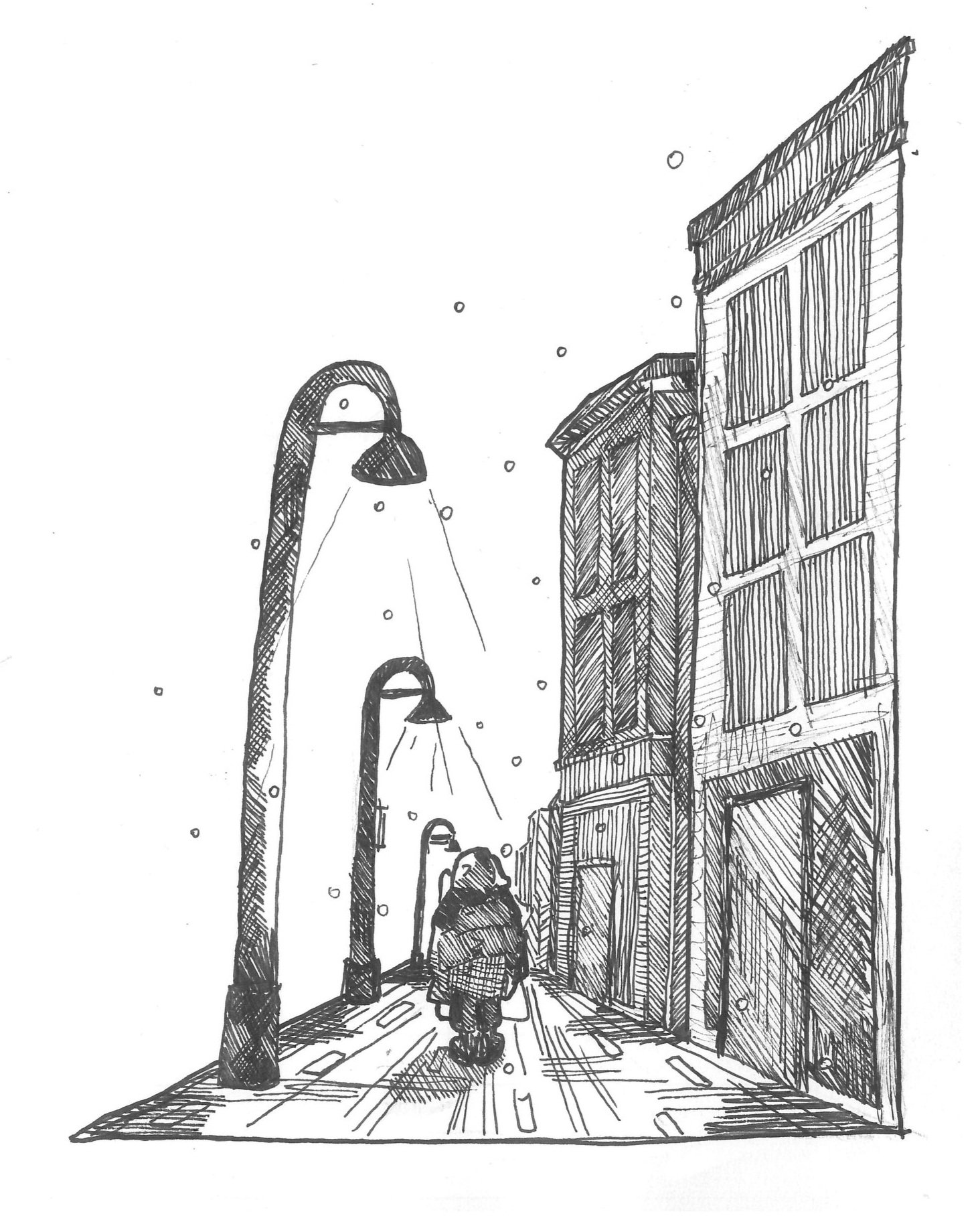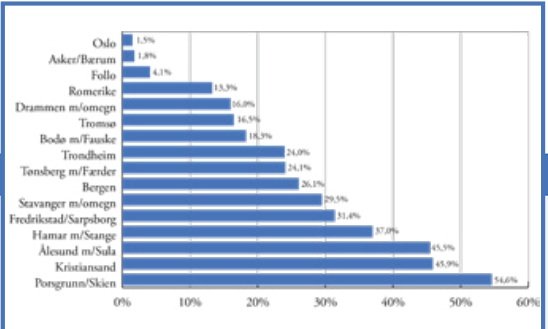THE HOMELESS IN THE BITING COLD

THE HOMELESS IN THE BITING COLD
Written by Tobias Waage Bremnes, fylkesting representative for Akershus Venstre and journalist in Tuntreet
Translator: Vegard Sjaastad Hansen
A rotskudd is an opinionbearing text written by an editorial member of Tuntréet and expresses the writer’s personal opinions.
The thermometer has tipped to -23°C, and I have just been to the store to buy dinner for tonight. The cold outside is dreadful, and with every breath, I can feel the piercing pain of the cold air deep in my chest. Even with gloves on, my fingers and joints ache, feeling like stiff, frozen icicles.
Fortunately for me, my shared living space is just around the corner, and I can soon warm myself in front of our wood stove. However, not everyone is as fortunate as I am. As many as 3000 Norwegians are now wandering around in this biting cold without shelter and a warm home to return to.
The thought of all those people forced to stay outside pains me incredibly. I am left with several questions: Who are these people? What is the reason they don’t have a home, and what is our society doing for those of us who are homeless?
The truth is that we are doing a lot, but still not enough.
When the cold was at its worst earlier in January, Oslo Central Station was kept open for the homeless in the city. According to Bane NOR, 30 people stayed overnight at the station from Saturday to Sunday, with some people outside being offered a place inside. Normally, the Red Cross and the Church City Mission operate a year-round shelter for the homeless. The Salvation Army also has emergency shelter on nights when it is so cold that sleeping outdoors poses a health risk. Unfortunately, there is not enough space for everyone, and dozens are turned away daily. Even though they do their best, the Red Cross has been criticized several times for their shelter system. The issue is that the system is based on a lottery where you must draw the right token to be allowed to stay indoors. Drawing a green token means you can sleep inside, and if you draw a red one, you must stay outside. Since it’s random whether you draw a red or green token, the system is supposedly “fair.” However, the system fails to see the individuals, and people with health problems end up being denied access and forced to sleep outside.
In 2019, NRK published the article “The Homeless,” sharing the story of an elderly couple. The man had health problems, and if he drew a red token and his wife drew a green one, she chose to sleep outside with him to take care of him.
Those who don’t find a place to sleep indoors must find other solutions. In the summer, many might prefer to sleep in a park, but this became illegal in Oslo in 2013. As a result, many have to resort to sleeping in everything from public toilets to under busy roads. A popular spot is between the boulders under Sinsen subway station. I believe this is undignified and heartless.
We not only have a moral responsibility to improve their living situation but also a legal responsibility. According to the Sosialtjenesteloven § 27, municipalities are obliged to provide temporary housing for those who cannot do it themselves. However, in several places, homeless people do not receive a dignified offer, and municipalities neglect their duty.
It’s essential to remember that homelessness exists in all municipalities. It is particularly prevalent in our major cities such as Oslo, Bergen, Trondheim, and Stavanger, but we must not forget that it also exists in places like Ås.
Fortunately, the number of people without a home is continually decreasing. Since 2016, the number of homeless has been reduced by 15 percent, and since 1996, it has decreased by 46 percent. According to researcher Evelyn Dyb at OsloMet, this is because municipalities have systematically worked over a long period to reduce homelessness.
One of the challenges we face is that today’s housing market is difficult to enter. One way to address this is through the nurse index. This refers to the percentage of homes in an area that a single nurse with an average salary can afford. In 2022, the nurse index in Ås/Follo was 4.1%.
Furthermore, it is crucial to work preventively against exclusion and create good support systems for those who fall through the cracks. After all, many of those who are homeless today receive social assistance or disability benefits, as well as many who are dependent on substances. It is essential to get more people into employment, increase social assistance, and help people out of addiction.
Furthermore, it is crucial to work preventively against exclusion and create good support systems for those who fall through the cracks. After all, many of those who are homeless today receive social assistance or disability benefits, as well as many who are dependent on substances. It is essential to get more people into employment, increase social assistance, and help people out of addiction.
The nurse index 2022. Follo is the third most difficult area to enter the housing market. Source: https://eiendomnorge.no/aktuelt/blogg/sykepleierindeksen-2022



